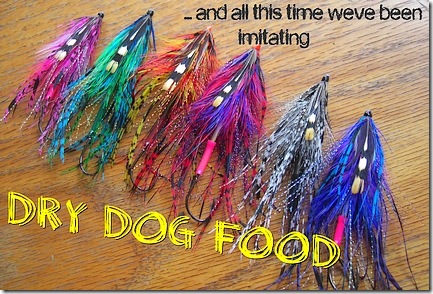There are so many absolutes, so many unequivocating terms in the below as to be downright scary:
A new study has revealed that the impact of a hatchery environment on steelhead trout is so profound that in just one generation genetic traits are developed that cost fish the natural ability to be able to survive in the wild.
Nineteen years of research on the Hood River in Oregon will have both scientists and anglers in an uproar once it’s common knowledge that we’ve been unknowingly selecting for big sea-run trout that like concrete ditches and prefer the taste of dried kibble …
… and will we be able to look that thousand dollar spey rod festooned with black nickle and dripping acres of rare and exotic dander, without feeling less the Man and so very shortchanged … perhaps dirty even?
We’ve known for some time that hatchery-born fish are less successful at survival and reproduction in the wild,” said Michael Blouin, a professor of zoology at Oregon State University. “However, until now, it wasn’t clear why. What this study shows is that intense evolutionary pressures in the hatchery rapidly select for fish that excel there, at the expense of their reproductive success in the wild.
-via Worldfishing & Aquaculture
In short we’ve been catching the social moths, the trollops, and the used car salesmen of the steelhead world.

What’s worse is the potty mouth diet we’ve been catering to … These being the Twinkie eaters, the migrating fish that dine at fish ladders and Chinese takeout rather than forage for a meal, and all those wonderful and intricate patterns that have proven so successful have been a colorful representation of the hatchery ditch followed by a shovel full of desiccated dog chow.
We sure showed them, opposing thumb and big frontal lobe really proving the difference this time.
I’m going back to salmon roe goober and florescent marshmallows, food befitting some fat-bottomed fish struggling for breath on the cobble, trying to gasp out more fart jokes …

Yes?
For decades there has been a growing body of evidence that hatcheries have been doing more harm than good. Evidence that has been soundly ignored or denied by political agencies, certain false “conservation” groups and more than a few fishermen. This latest political push towards integrating wild and hatchery fish, the “wild brood stock” programs is pure insanity.
I don’t see what the problem is, I just got off the phone booking my Salmon fishing trip to Yemen (after watching that entertaining documentary trailer you posted the other day). If they can get salmon to the Yemen, I’m sure they can make a fishery that more closely mimics the wilderness experience. Also, do you think you could send me a couple of those pictured flies for my trip? They look to be just the ticket.
The zoo’s have gone through a similar enlightenment regarding concrete pins. I’ve always wondered if releasing trout as fingerlings wasn’t a better idea than releasing 12″ couch potatoes. There is a place for kibble critters in “popular” venues where 9 year olds and Zebcos intermingle. However, when the expectation is for a fish to survive to spawn, the faster they are released to the cull the more we might expect of their behavior.
At least genetic engineering has worked for our corn. (Wait, scratch that.)